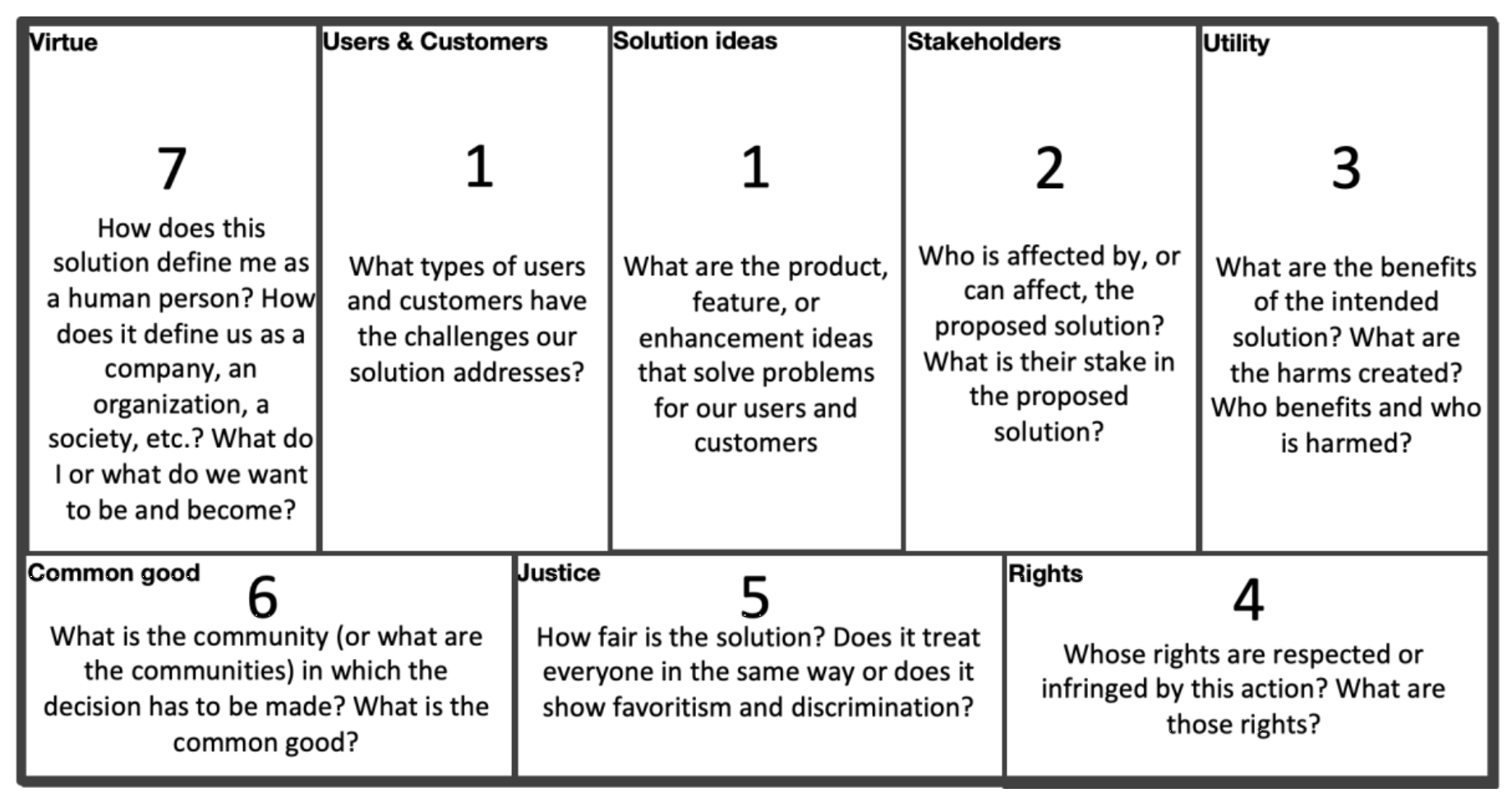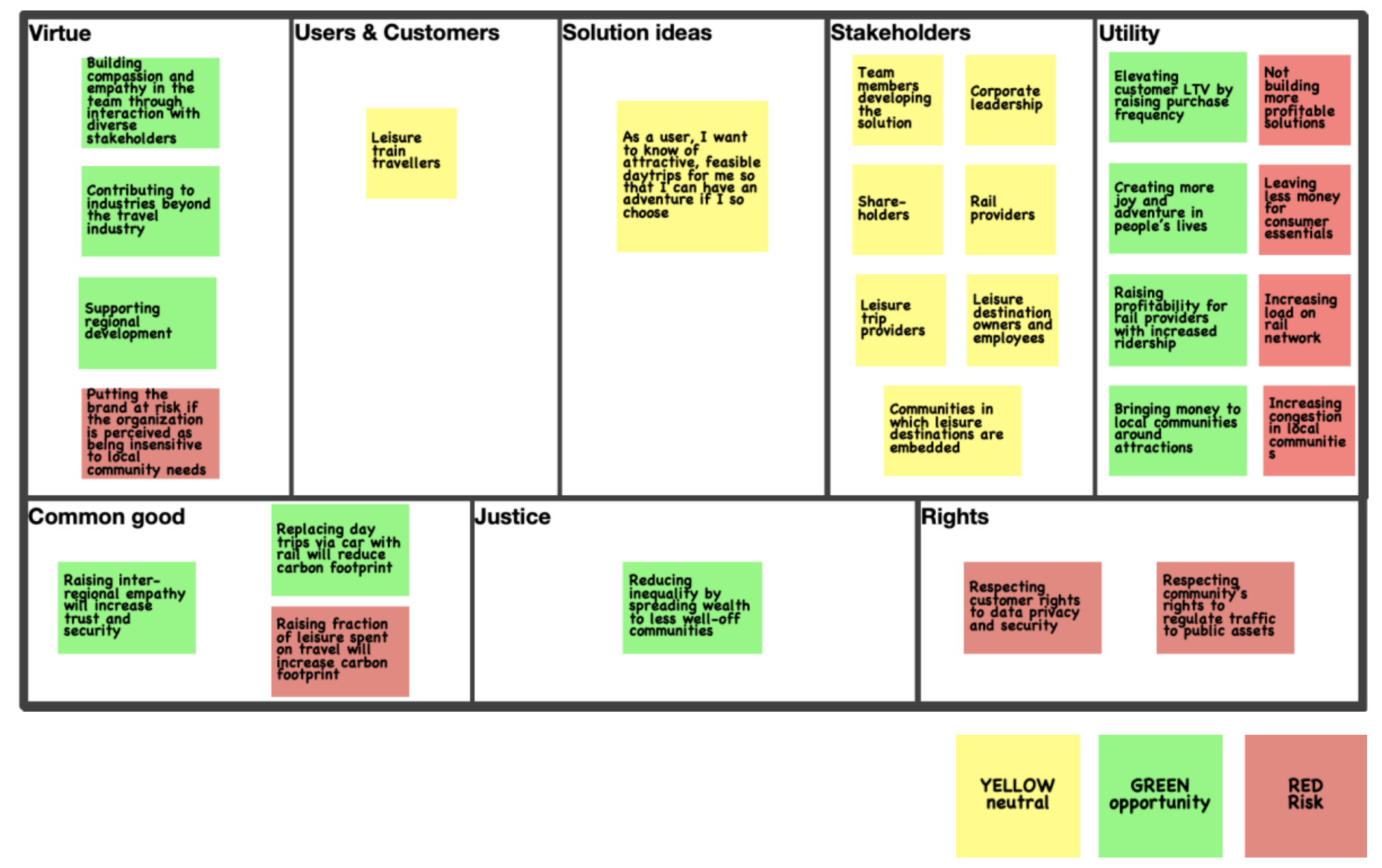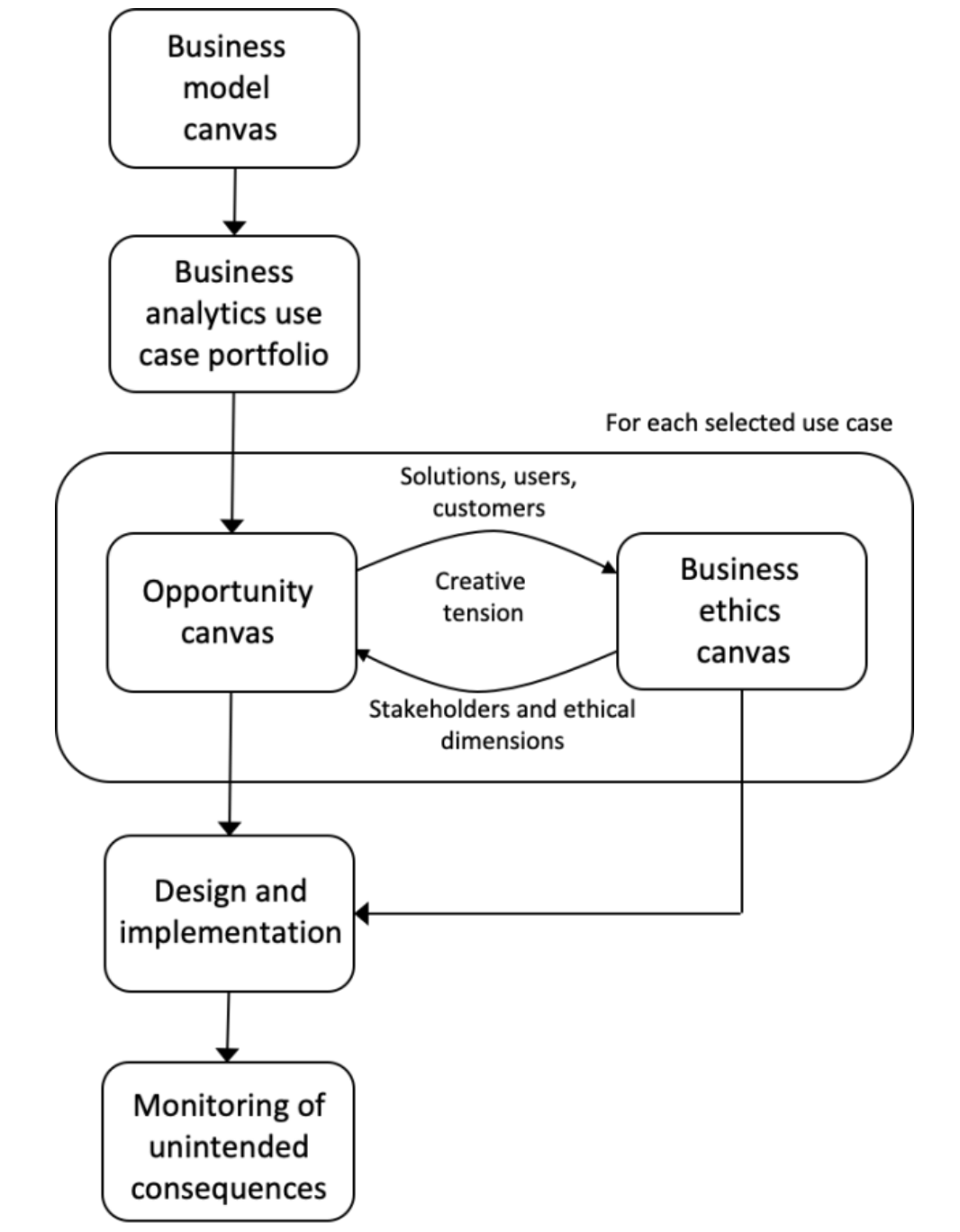Whitepaper: The Business Ethics Canvas
Richard Vidgen University of New South Wales 9 May 2020
Introduction
Artificial intelligence (AI) is playing a greater and greater role in our daily lives, impacting on job applications, medical treatments, parole eligibility, and loans and financial services. There are undoubted benefits to algorithmic decision-making in general, and AI in particular. However, the potential for harm – intended or unintended – arising from algorithmic decision-making indicates that an ethical dimension is needed when we engage in AI and analytics projects.
The business ethics canvas
Much of the guidance on ethical investigations for practitioners has been rather abstract. In our paper in the European Journal of Operational Research (2019), “Exploring the ethical implications of business analytics with a business ethics canvas”, we propose a practical way of unpacking and thinking about ethical issues in business analytics. Our aim in this paper is to develop an ethical framework in the form of a business canvas. To do this we draw on the Markkula Institute for Applied Ethics and their five ethical dimensions (Utilitarian, Rights, Justice, Common Good, Virtue).
Using these five ethical dimensions we created a business ethics canvas (a BEC PowerPoint template is available). The canvas elements are addressed going in clockwise order around the canvas (Figure 1):
- a proposed analytics solution that address the needs of specific customers (we recommend that these are generated in an opportunity canvas)
- identification of stakeholders that can affect or are affected by the proposed analytics solution
- an assessment of stakeholder utility of the analytics solution
- an assessment of the rights of stakeholders
- an assessment of the fairness (justice) of the solution
- implications for the common good
- reflections on the virtue of the proposed analytics solution

Figure 1: The business ethics canvas (BEC)
The business ethics canvas in action
In the paper we describe how the business ethics canvas was developed through application in an online travel organization that is considering using analytics to target its customers with ‘days out’ offers. The use of post-it notes allows the canvas to be iterated and refined and the use of colour to highlight areas of concern and areas of opportunity (Figure 2).

Figure 2: The business ethics canvas illustrated with use case “DaysOut”
Our research shows that ethical analysis should not be seen as a constraint or overhead to analytics development – exploring the ethical dimension and including multiple stakeholders provides a richer insight into business value creation, as well as providing greater confidence about emerging ethical implications and project risk. Our research proposes that we should position the business ethics canvas (BEC) and the opportunity canvas (OC) as counterparts where each shapes and informs the other in a creative tension (Figure 3).

Figure 3: Opportunity canvas and business canvas working together
Further information
See a video of Ian Randolph at the Operational Research Society’s 2018 Annual Analytics Summit presenting the Business Ethics Canvas.
For full details of the BEC:
Vidgen, R., Hindle, G., and Randolph, I., (2020). Exploring the ethical implications of business analytics with a business ethics canvas. European Journal of Operational Research, 281(3): 491-501.
If you would like to experiment and help us develop this approach further, please contact:
Email: r.vidgen@unsw.edu.au
